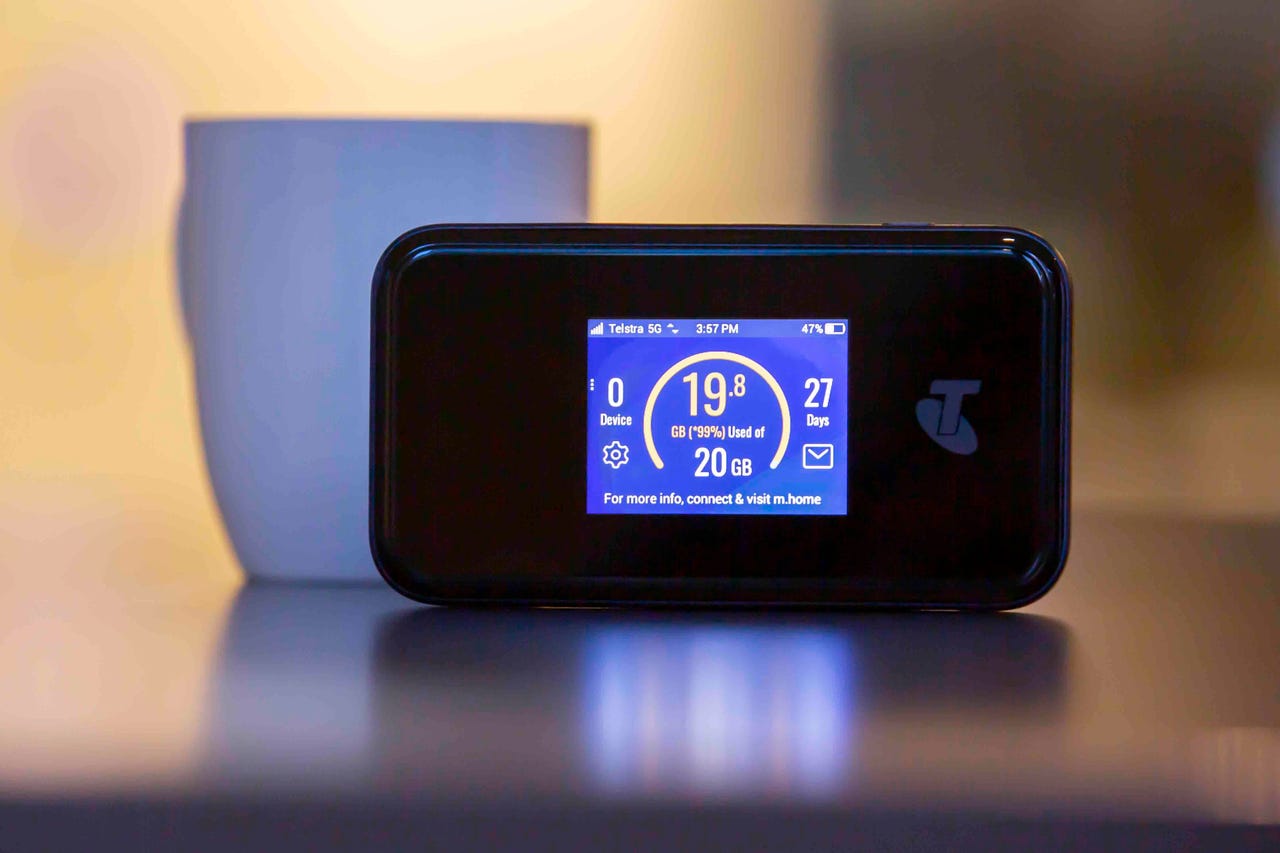Telstra launches 5G mobile broadband hotspot with mmWave support


Australia's incumbent telco Telstra has announced the availability of its first 5G hotspot capable of supporting millimetre wave (mmWave) frequencies.
The 5G Wi-Fi Pro will cost AU$600, or AU$25 over two years, and comes with a colour display, a gigabit ethernet port, USB port, 4500 mAH battery that is said to last nine hours of continuous use, as well as 15 devices on each on its 2.4GHz and 5GHz Wi-Fi networks. The device supports Wi-Fi 6, also known as 802.11ax.
The catch with the device is that currently, Telstra only has three testing sites capable of using mmWave technology -- two on the Gold Coast and one in Sydney. Telstra said it expects mmWave deployments to ramp up in 2021.
Spectrum for use at the higher end of 5G is set to go to auction at the start of next year when the government will sell 2.4GHz of the 26GHz spectrum band.
The hotspot is able to work on 5G, LTE networks, as well as 3G in the 850MHz band.
"mmWave is going to be a big part of our 5G future and with the Telstra 5G Wi-Fi Pro we are offering customers a device that will be able to take advantage of the next iteration of 5G as soon as it arrives," Telstra product and service design executive Andrew Stormont said.
The telco added that it currently has 5G switched on at 47 cities and large regional towns around Australia.
Telstra claimed that 8 million people now "live, work, and pass through" its 5G footprint daily.
At the start of the year, the company said it had 100,000 5G devices on its network.
Earlier this month, it said its mobile network was end-to-end enabled with support for standalone 5G, with upgraded 5G radio equipment and an Ericsson 5G core in place.
"Getting the Telstra mobile network to be 5G standalone-ready is an important step towards unleashing greater capabilities for enterprises and consumers alike," Telstra's group executive networks and IT Nikos Katinakis said.
"The new standalone capability will be able to support new enterprise services that power a branch office running multiple applications and services. It could also help new industry vertical use cases such as manufacturing and remote-controlled operations."
Devices capable of using standalone 5G are not yet commercially available, but Telstra said it expects that to occur in late 2020, with devices currently undergoing testing. The first customers to make use of the network would be enterprises and early-adopting developers before consumers jump on the network, the telco added.
In February, Telstra and Ericsson successfully extended LTE signal range up to 200 kilometres from a mobile tower.
When making the announcement, the telco sought to hose down the idea that the patch could be applied to its network and instantly double its coverage.
"This is not a magic pill to double out coverage -- I wish it was. This is a very important option for us when we're looking at specific coverage scenarios and options to deploy this technology," Telstra 5G network principal Paul Milford said at the time.
The telco expects the extended range to be useful for Internet of Things deployments.
Related Coverage
Vodafone Australia and TPG merger: Everything you need to know
While labelled a merger of equals, in accounting terms, Vodafone is swallowing up TPG while simultaneously bringing a ton of baggage and discarding another ton on its current owners.
UK looking to backtrack on Huawei participation in 5G networks: Report
US sanctions and backbenchers that are set to cross the floor and vote against government legislation are reportedly the impetus for the change of course.
Optus and Curtin University partner to build on-campus 5G lab
It will be used for research, teaching, learning, and collaboration on 5G projects.
Australian poll finds 1 in 8 blame Bill Gates and 5G for coronavirus
Misinformation about the COVID-19 pandemic is being believed more often with young people, an Essential poll has said.
Inquiry recommends Australia reviews 5G cyber supply chain risks
Committee also believes Australia should address misinformed community concerns and encourage manufacturing of telco equipment onshore.